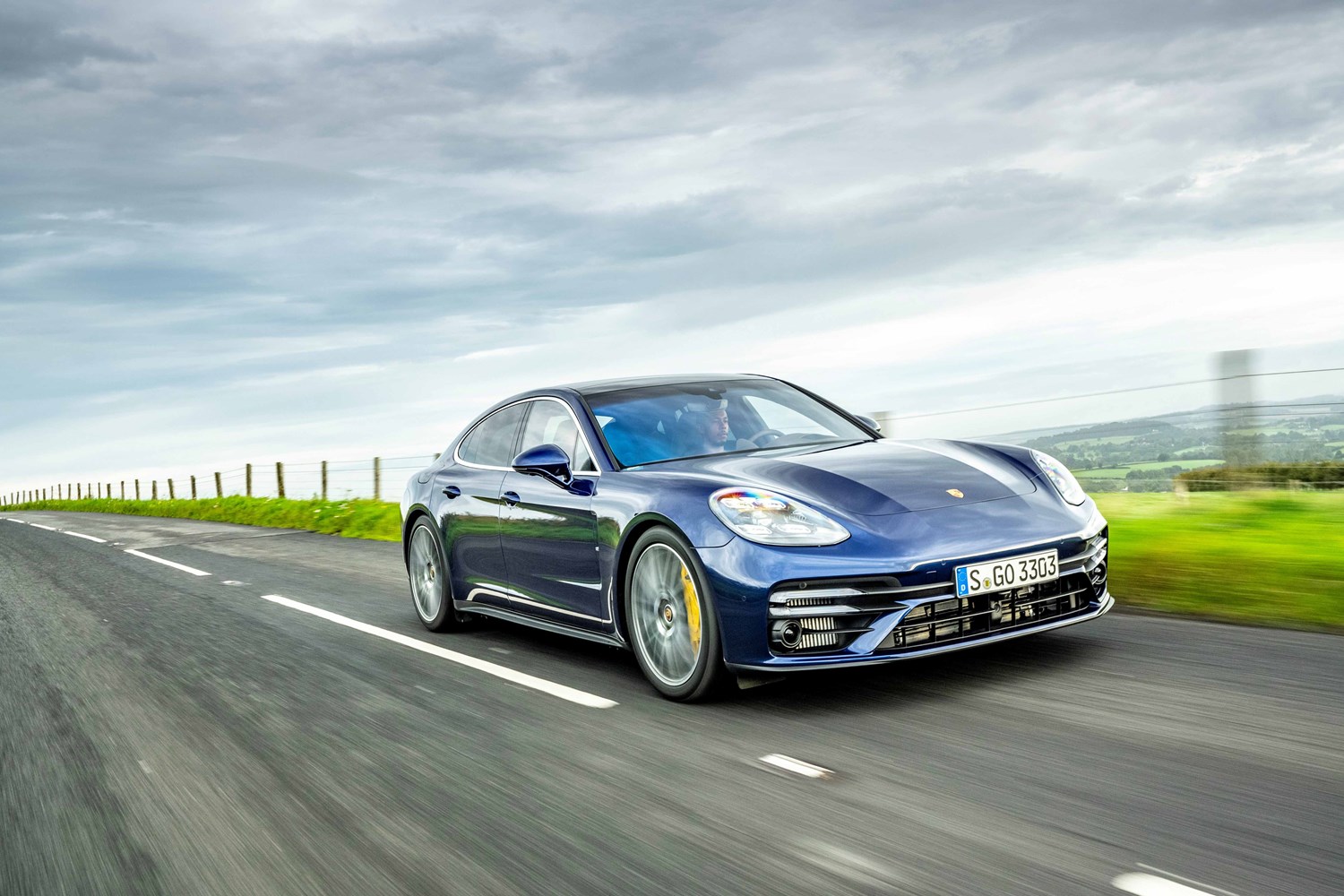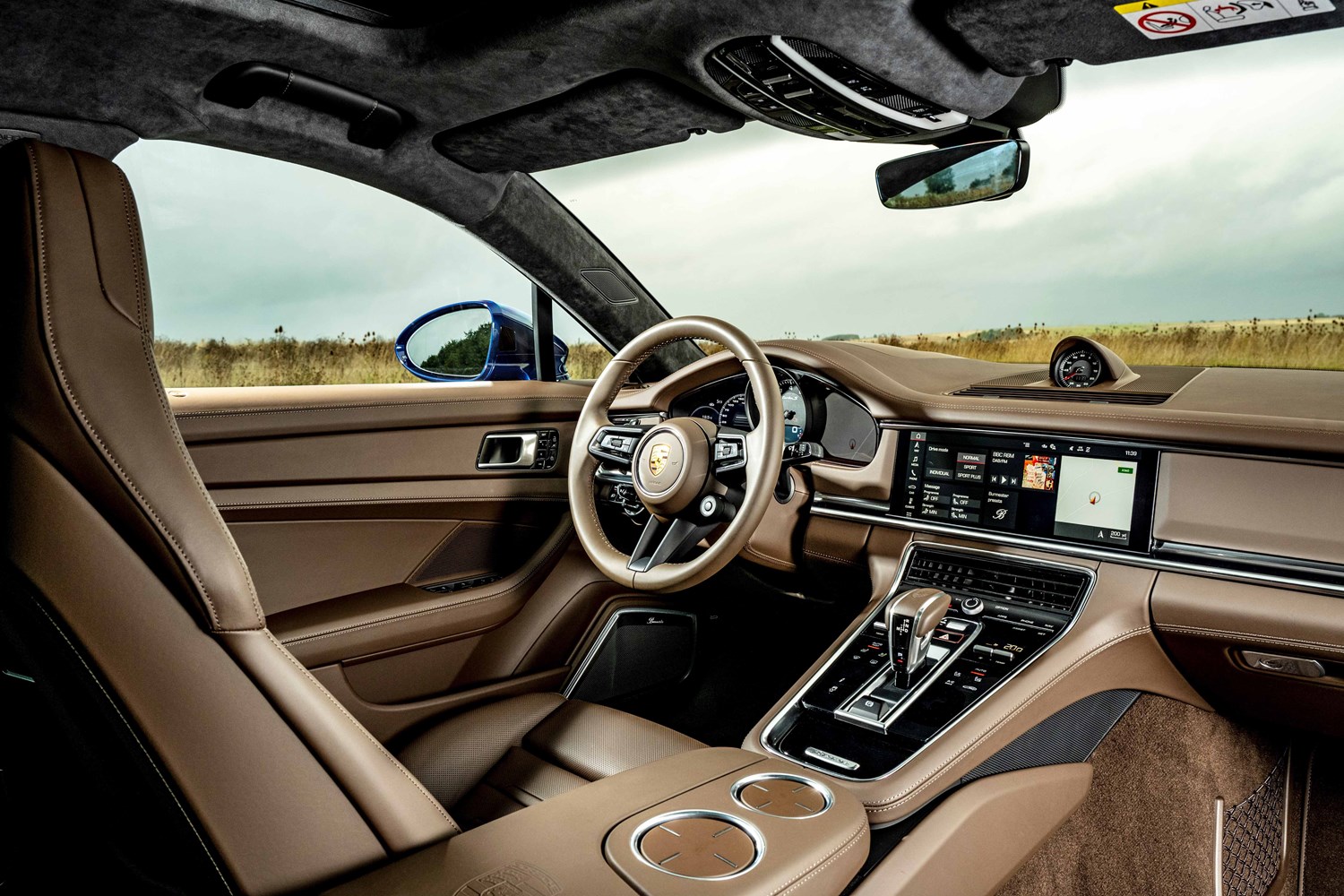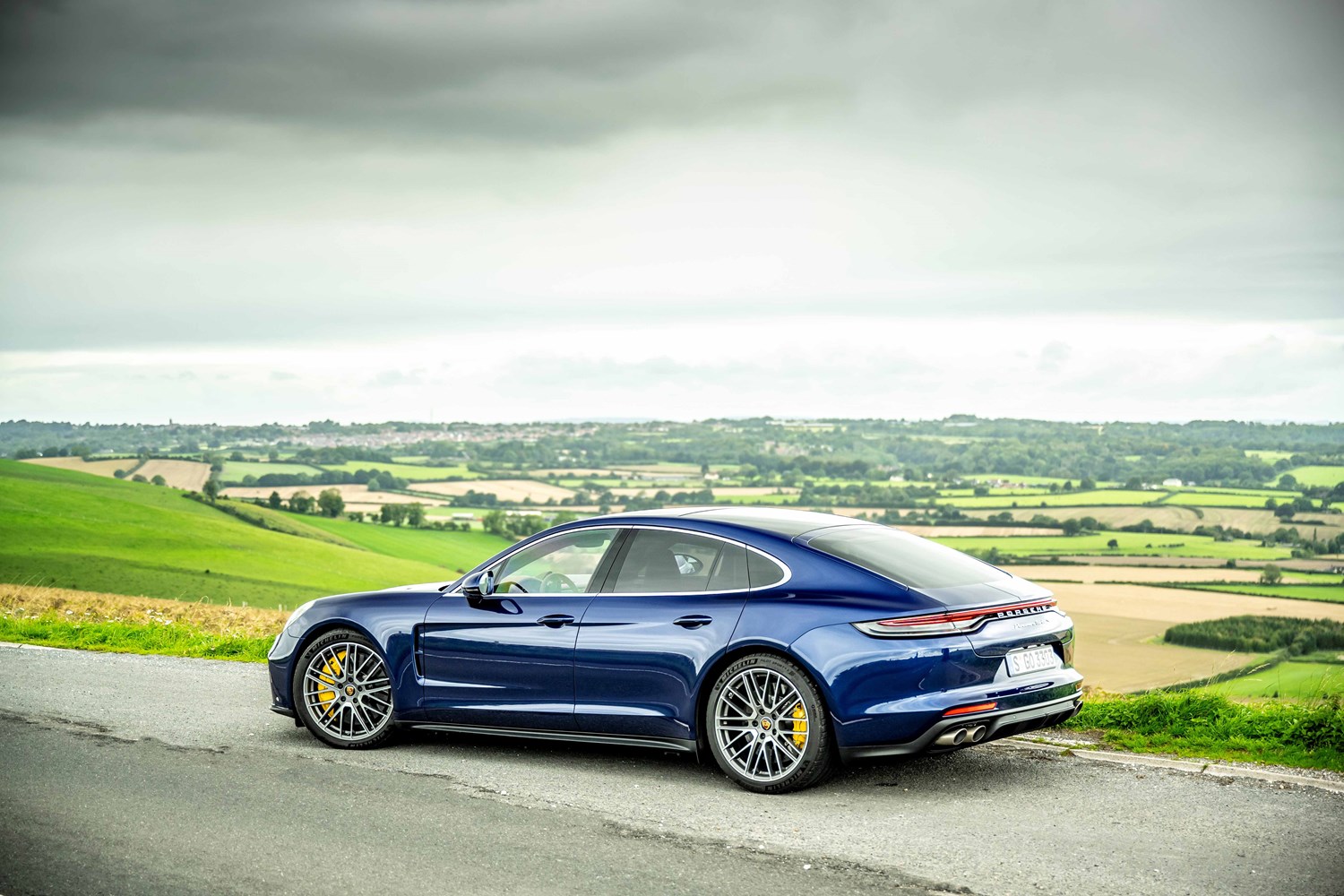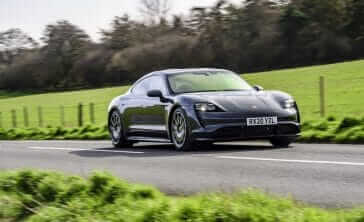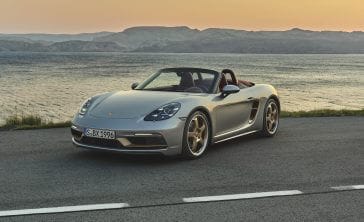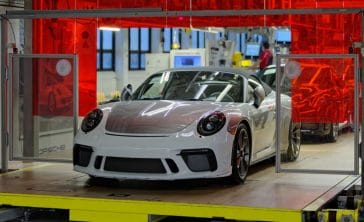Space and practicality
The ideal of a practical Porsche might seem strange, but that’s what the Panamera is. Granted it’s not the most practical car in this segment, but with a 495-litre boot in the hatchback, there’s no shortage of room. If you require something a bit roomier, there is the estate car-like Sport Turismo model, which offers a more spacious shape, though the size of the boot only increases marginally to 520 litres.
There’s also enough rear space for adults, if not quite as much legroom and headroom as you may find in conventional luxury cars. You can also choose a more premium-feeling four-seat layout, as opposed to the standard five-seat option.
Engines
While Porsche briefly introduced a diesel engine option on the latest Panamera, the line-up today includes just petrol and plug-in hybrid options, which all use eight-speed automatic gearboxes.
The standard ‘Panamera’ kicks off the range, which utilises a turbocharged 2.9-litre V6 petrol engine producing 325bhp, though even this can sprint to 60mph in just 5.4 seconds and reach a top speed of 168mph. A ‘Panamera 4’ option brings power to all four wheels using the same engine. The ‘4 E-Hybrid’ is the most affordable plug-in hybrid option, and combines the 4’s powertrain with an electric motor and 17.9kWh battery – producing 456bhp in all.
Next up is a 4S model, which features the same 2.9-litre V6 petrol engine, but increases power to 434bhp – reducing the 0-60mph time to 4.1 seconds and increasing the top speed to 183mph. A 4S E-Hybrid combines this engine with electrification to produce a total of 552bhp – meaning 0-60mph takes just 3.5 seconds.
Following this we move to the true performance models – which use a larger 4.0-litre V8 engine. First up is the driver-focused GTS model, which produces 473bhp, followed by the monstrous Turbo S model, which delivers a mammoth 621bhp, allowing for a 0-60mph time of just three seconds and a top speed of 196mph. This model is also ripe for electrification, as a Turbo S E-Hybrid model heads up the range – producing a remarkable 690bhp and sharing performance figures with the sole combustion model.
Running costs
If you’re looking to keep your running costs down, the plug-in hybrid models are undoubtedly the ones to go for. Keep the batteries charged and Porsche claims it can travel for 34 miles on electricity – allowing for a fuel economy figure of up to 141.2mpg and CO2 emissions as low as 45g/km in the case of the E-Hybrid.
Petrol models on their own are very thirsty – all offering high CO2 emissions and fuel economy figures around 25mpg.
If you do a lot of miles each year, it could be worth rooting out a discontinued diesel option, which utilised a 4.0-litre diesel engine, but Porsche claimed it could still return 40mpg, with CO2 emissions of 265g/km.
Just be aware that regardless of the model you go for, insurance premiums will be steep, while servicing costs will not be cheap either.
